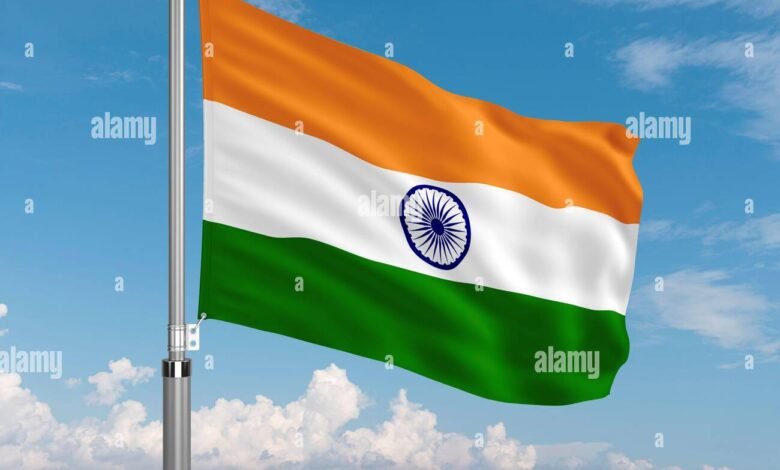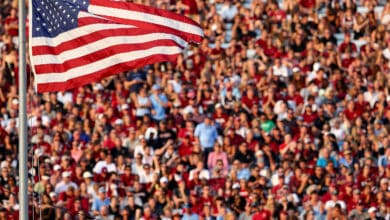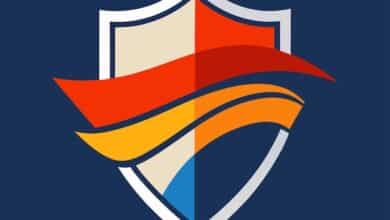Indian Flag Waver: Celebrating Patriotism with Pride

The Indian flag is a symbol of pride and unity. It represents the country’s rich history and diverse culture.
The Indian Flag Waver is a significant figure in many events, rallies, and celebrations. This individual, filled with enthusiasm, waves the tricolor with great passion. The sight of the flag waving high stirs emotions and ignites patriotism in every Indian heart.
Whether at a cricket match, a political rally, or a national holiday, the flag waver plays a crucial role in spreading national pride. Let’s explore the importance and the impact of the Indian Flag Waver in various settings.
History Of The Indian Flag
The history of the Indian flag is rich and fascinating. It showcases the struggle and spirit of a nation. The flag has undergone many changes. Each version reflects a different stage in India’s journey toward independence and beyond.
Evolution Of Design
The first Indian flag was designed in 1906. It had three horizontal stripes of green, yellow, and red. In 1917, a new flag featured five red and four green stripes with stars. The famous version by Pingali Venkayya came in 1921. It included red and green with a white stripe and a spinning wheel.
The final design was adopted in 1947. The current flag has three colors: saffron, white, and green. The Ashoka Chakra, a 24-spoke wheel, is in the center. This design was accepted on July 22, 1947, just before India gained independence.
Symbolism Of Colors
Each color in the Indian flag has deep meaning. Saffron stands for courage and sacrifice. It reflects the strength of the country. White represents peace and truth. It reminds citizens to be honest and just. Green symbolizes growth and fertility. It shows the land’s richness and its future potential.
The Ashoka Chakra in the center stands for progress. Its 24 spokes represent the hours in a day. This symbolizes the constant movement and progress of the nation.

Credit: vectorflags.com
Significance Of Flag Waving
The act of flag waving holds deep meaning in India. It is not just a show of patriotism. It represents values, history, and the spirit of the nation. Each wave of the flag tells a story. A story of struggle, hope, and pride.
National Unity
Flag waving brings people together. It unites citizens under one symbol. The Indian flag represents the diversity of the nation. Each color and symbol on the flag has a meaning. Saffron stands for courage. White represents peace. Green symbolizes fertility and growth.
During national events, the flag is waved with pride. It reminds everyone that they are part of a larger family. It transcends regional and cultural differences. The flag becomes a common ground for all.
Expression Of Freedom
Waving the flag is an expression of freedom. It is a reminder of the hard-won independence. The Indian flag is a symbol of self-rule and democracy. It tells the story of the freedom struggle. The sacrifices made by countless individuals.
During Independence Day and Republic Day, the flag is waved widely. It symbolizes the country’s sovereign status. People of all ages participate. They show their love for the nation through this simple yet powerful act.
Iconic Flag Waving Events
India’s flag waving events are a source of immense pride. Each event symbolizes the nation’s unity, strength, and rich history. Among these, Independence Day and Republic Day stand out as the most iconic. These events bring together millions of Indians in a shared celebration. Let’s delve into these significant occasions.
Independence Day
Every year on August 15th, India celebrates Independence Day. This day marks India’s freedom from British rule in 1947. The Prime Minister hoists the national flag at the Red Fort in Delhi. A 21-gun salute follows, creating a spectacular sight. Speeches and cultural programs highlight the day’s importance. Schools, colleges, and communities also participate in flag-raising ceremonies. People sing the national anthem, ‘Jana Gana Mana’, with patriotic fervor.
Republic Day
Republic Day, celebrated on January 26th, commemorates the adoption of the Indian Constitution in 1950. The President of India unfurls the national flag at Rajpath in New Delhi. A grand parade showcases India’s military prowess and cultural diversity. Tableaux from different states display their unique heritage. School children also perform traditional dances. This event is broadcast live, allowing the entire nation to watch and celebrate together.
Cultural Impact
The Indian flag waver holds a special place in the hearts of Indians. It symbolizes national pride and unity. This powerful symbol is deeply rooted in various aspects of Indian culture. From cinema and media to literature and art, the Indian flag waver is celebrated and revered.
Cinema And Media
Indian cinema often showcases the flag waver in iconic scenes. These scenes invoke patriotism and national pride. Famous films like Lagaan and Chak De! India feature stirring moments with the flag. Such scenes create emotional bonds with audiences.
Television news channels also use the flag waver during national events. The Republic Day parade is a prime example. Millions watch as the flag waver leads the parade. This visual representation reinforces national unity.
Literature And Art
Indian literature often features the flag waver as a symbol of courage. Many stories and poems describe the struggles and victories of the nation. The flag waver stands tall in these narratives, inspiring readers.
In the world of art, the flag waver is a popular subject. Artists use various mediums to depict the flag. From paintings to sculptures, the flag waver is celebrated. These artworks adorn public spaces and museums, reminding people of their heritage.
Below is a table highlighting notable works featuring the flag waver:
| Medium | Title | Artist/Author |
|---|---|---|
| Film | Lagaan | Ashutosh Gowariker |
| Film | Chak De! India | Shimit Amin |
| Painting | Tryst with Destiny | M. F. Husain |
| Poetry | Where the Mind is Without Fear | Rabindranath Tagore |
Role Of Youth
The role of youth in promoting national pride is invaluable. Youngsters, driven by enthusiasm and energy, play a key part in celebrating the Indian flag. They engage in various activities to showcase their love for the nation. These activities not only foster a sense of patriotism but also unite the community. Let’s explore how the youth contribute during school celebrations and college festivals.
School Celebrations
School events often highlight the importance of the national flag. Students participate in flag hoisting ceremonies with great zeal. They take part in parades, showcasing discipline and respect. Teachers and students organize cultural programs. These programs include dances, songs, and skits portraying India’s heritage. Students also engage in drawing and essay competitions. These activities revolve around the theme of the national flag.
Such events instill a sense of responsibility in young minds. They learn the significance of the tricolor. Schools play a pivotal role in shaping patriotic values. These celebrations leave a lasting impact on students’ minds.
College Festivals
College festivals are another avenue where youth express their patriotism. Students organize large-scale events around Independence Day and Republic Day. Colleges host debates, quizzes, and cultural performances. These events often focus on the national flag and its importance. Youth clubs and student unions take active part in these celebrations.
Rallies and marches are common during these festivals. They not only celebrate the flag but also spread awareness. College students use social media to amplify their patriotic messages. They share photos and videos of the tricolor, reaching a wider audience.
College festivals foster camaraderie and national pride among students. These events create a sense of unity and belonging. The youth, through such activities, reinforce the significance of the national flag.
Flag Waving In Sports
Flag waving in sports is a common sight in many events. Fans wave their national flags to show support for their teams. This act of waving flags can bring unity and excitement.
Indian fans, in particular, are known for their passionate flag waving. Whether it’s cricket, the Olympics, or other sports, the Indian flag is often seen in the stands. It symbolizes pride and patriotism. Let’s explore the role of flag waving in some popular sports events.
Cricket Matches
Cricket is almost a religion in India. Fans fill the stadiums, waving the tricolor flag with enthusiasm. The sight of the Indian flag in the stands boosts the players’ morale. It also creates a sense of community among the fans. They feel united and connected through their love for the game and their country.
During international matches, the Indian flag waving stands out. The fans’ energy is infectious. It often spreads to other spectators, creating an electrifying atmosphere.
Olympic Games
The Olympic Games are a global event where athletes represent their countries. Indian supporters wave the national flag to cheer for their athletes. This act of waving the flag signifies national pride and support for the competitors.
In the Olympics, the Indian flag becomes a symbol of hope. Fans believe in the athletes and their potential to win. The flag waving shows the world that India stands behind its sportsmen and women.
Technological Innovations
Technological innovations have transformed how we show our patriotism. The Indian Flag Waver is a great example. New technologies make it possible to celebrate national pride in exciting ways. From digital flags to social media campaigns, the Indian Flag Waver uses modern tools to reach people far and wide.
Digital Flags
Digital flags bring the tricolor to your screens. They wave in the wind, just like real flags. These flags can be used on websites, apps, or even as screensavers. They give a sense of pride and unity. Anyone can download them easily. Schools, offices, and homes can display digital flags during national holidays. It’s a simple, yet effective way to show love for the country.
Social Media Campaigns
Social media campaigns help spread the message of patriotism. People share pictures and videos of the Indian Flag Waver. These posts can go viral, reaching millions. Campaigns often include hashtags and challenges. They encourage users to participate and share their content. This increases engagement and fosters a sense of community. Influencers and celebrities also join in, which boosts the reach further.

Credit: in.pinterest.com
Global Influence
The Indian flag, known as the Tricolor, is recognized worldwide. Its influence extends beyond India’s borders, touching hearts globally. This is especially evident during significant international events and celebrations by the Indian diaspora.
Diaspora Celebrations
Indian communities around the world proudly wave the Tricolor. Diaspora celebrations often coincide with India’s Independence Day and Republic Day. These events feature cultural programs, parades, and flag-hoisting ceremonies.
In countries like the USA, Canada, and the UK, Indian associations organize grand events. These gatherings showcase Indian culture and heritage. They also strengthen the bond between India and the host countries.
| Country | Major City | Event |
|---|---|---|
| USA | New York | India Day Parade |
| Canada | Toronto | Independence Day Gala |
| UK | London | Republic Day Celebration |
International Events
Indian flags are also prominent at global sporting events. Cricket matches, especially, see a sea of Tricolors in the stands. Fans wave the flag, sing anthems, and cheer for Team India.
The Tricolor is also visible during the Olympics. Indian athletes proudly carry the flag during the opening and closing ceremonies. This moment fills every Indian heart with pride.
At global business forums, Indian delegates display the flag. It symbolizes India’s growing influence in the world economy. The Tricolor is a beacon of hope, unity, and progress.
- Cricket World Cup
- Olympic Games
- Global Business Summits
These events highlight India’s presence on the global stage. The Indian flag waver is more than a symbol. It represents a nation’s spirit, pride, and unity.

Credit: www.shutterstock.com
Frequently Asked Questions
What Is The Indian Flag Waver?
The Indian Flag Waver is a person who waves the Indian national flag, typically during patriotic events, parades, and national holidays.
How To Become An Indian Flag Waver?
To become an Indian Flag Waver, participate in local parades, patriotic events, and national celebrations. Show enthusiasm and respect for the flag.
Why Is Flag Waving Important In India?
Flag waving in India symbolizes patriotism, unity, and respect for the nation. It is a way to celebrate national pride and heritage.
Where Can I See Indian Flag Wavers?
You can see Indian Flag Wavers during national holidays, parades, sporting events, and other patriotic celebrations across India.
Conclusion
The Indian flag waver brings pride and unity to every celebration. Its vibrant colors symbolize India’s rich history and culture. Holding it high, we feel connected to our heritage. This simple act of waving the flag unites us all. It reminds us of our shared values and dreams.
So, cherish these moments and wave the flag with joy. Celebrate our nation’s spirit.





